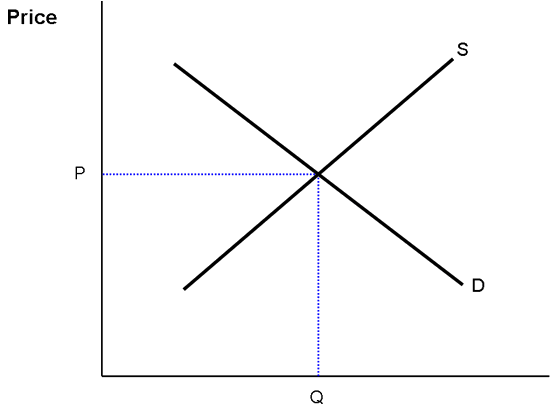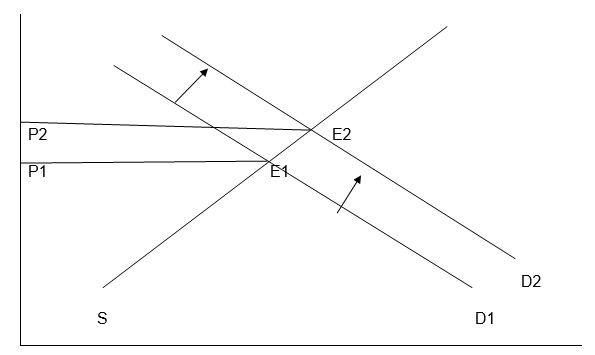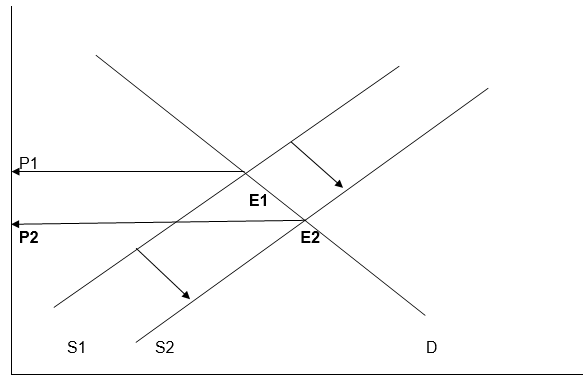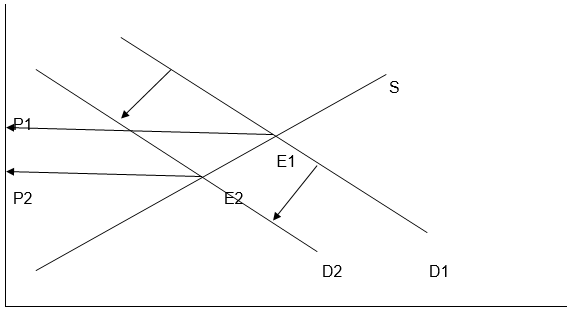Reasons why Prices of Food Such as Rice and Grain are on the Rise
The United Kingdom is one of the developed nations in the world. It has been able to ensure that food security for its citizens is guaranteed. The agricultural sector of this country is quite advanced, and many players in this industry are well equipped. They produce enough for the country. However, some agricultural products are not produced in this country. The country is always forced to import some agricultural products from other countries because the capacity produced internally is not enough to meet the national needs.
The local production may not satisfy the increasing needs of the population. The national population has been on the increase, especially due to immigration, which has been taking place over the years. Many people from various regions in the world come to this nation in search for better employment, tourism and other reasons that are relevant (Adil 2006, P. 85). Some of these visitors would change their citizenship to become Britons.
Others stay for a prolonged period while others are residing in the country illegally. Irrespective of the reason why they are in the country, these people must obtain the basic needs in life. Food is the most indispensable of all the basic needs. No one can do without food.
A number of immigrants heavily rely on grains as their staple food. They have to take products made using grains on a daily basis. This has strained the capacity of local production as it tries to meet the extra demand that has arisen due to the increased population.

The forces of demand and supply in the market always determine the price of a product. The graph above shows how demand and supply are related and how they help in determining the price of any product in the market. Demand for a product will be high if the number of customers who are willing and able to buy the product is higher than the supply of the product (Artis 1982, p. 72). Supply will be high if the amount of the product delivered in the market is higher than the capacity of the market. In this case, the capacity of the market refers to the number of those who are willing and able to purchase the product.
From the discussion above, it is noted that the population of this country has been on the rise over the recent past. Based on the diagram above, the demand (D) has steadily been on the rise. This is because of the increasing population. However, supply (S) has not changed to reflect this change in demand. This would make the demand for the product move from the left to the right as the diagram below demonstrates.

The diagram above shows a shift in the demand of the serials. The demand has shifted from D1 to D2. The price will always remain the same in the market if such an increase in demand is accompanied by an equal increase in supply. From the figure above, it is obvious that the increase in demand has not been accompanied by an increase in supply. The demand has gone higher. The arrows show this increase in the demand.
The equilibrium point will subsequently be disrupted. The point at which demand and supply were meeting in the graph above to determine the price of the product will change. As shown in the diagram above, this has changed from E1 to E2. This reflects the fact that although the market has expanded based on the customer base, suppliers remain the same. The shift in the equilibrium to a higher point will subsequently increase the price of the product in the market. The price will change from P1, which was a lower price, to P2.
Various Responses By Which Global Economy are Dealing With This Problem
The above case shows that the United Kingdom is one of the countries that may be hit by spiraling grain prices due to trade restrictions. When the government of a country puts restrictive measures on its markets, the effect may negatively affect the economy. The discussion in the first section demonstrates that although a country has a capacity to regulate trade within its borders, it can be extremely challenging to regulate its population successfully.
Based on many other factors that may play off within the country, it may fail to provide all the products required in the country locally (Werner 2008, p. 18). The graph above shows how natural the rise in the price of various products can be. The government may not intervene to regulate this price increase because the supply of the product shall have been exceeded by the demand. One of the worst consequences of this case will be inflation in the economy.
The global economy has made the effort to ensure that such cases are avoided at all costs. Most governments always argue that by restricting other firms from getting into their economy, it would be one way of developing local firms. It may be true that international firms may be a threat to some small firms that are struggling to grow (Quah 2002, p. 97). Because they are firms owned locally, their growth would be of benefit to the country than growth of other international firms. However, the cost of doing this may be detrimental as compared to having the foreign firms take control of the industry.
When a country has the capacity to produce a given product in mass at a low cost, but of high quality, it is recommended that it should produce in bulk and export the surplus to other countries that do not have that capacity. In return, such a country should also open up its market for foreign trade so that other countries too can deliver their products. When the supply of the product is higher than the demand, the prices may fall below the profitability levels.
Firms in this industry may end up making losses. This way, the supply and demand will balance. The diagram below demonstrates how the above case can be reversed in order to bring the price of the product to normal.

The above diagram shows that the demand of the country has remained constant, but the supply has changed. The country would have to open its market for international firms. As such, the supply in the market will increase. As shown in the diagram above, the supply will increase from S1 to S2. This will in effect change the equilibrium point from E1 to E2. The price will subsequently be reduced. It is crucial to note that the above remedy is meant lower food prices naturally in the market (Guisán 2005, p. 124). In case the price is already normal in the market, the above incident would result in a further decrease in the prices of the product.
The global economy can also rectify the above case by regulating the demand of the product that is posing the risk of bringing inflation into a country. The government, through relevant departments, should reverse the condition shown in the first diagram. The diagram below is a demonstration of this.

The above diagram shows a decrease in the demand for the product in question. The supply in the market has not changed, but the demand is reduced. The demand changes from D1 to D2. This will change the equilibrium from E1 to E2. The price will subsequently be lowered from P1 to P2. This strategy seems attractive to governments that are keen on restricting international firms from venturing into their economy (Sharma 2008, p. 21). An economy can achieve this objective through the above strategy in three ways.
The first way will be to introduce strong substitute products for the serials. In most countries around the world, cereals make their staple food (Pagoulatos 1979, p. 76). It is not possible for an individual to replace his or her staple food. An individual who considers the rise as his or her staple food will not easily be swayed to consume bread. Such a person will be willing to pay the extra fee but still consume rice. It is a highly challenging strategy to apply. A country may not depend on the government in managing food prices in the market.
The second strategy would be to reduce the population of the country. This would involve expatriating those living in the country illegally and encouraging citizens to lower the number of children they have per family. The process of expatriating illegal immigrants may be too costly. The move may also spark international debates regarding its validity, and this may put the country on a wrong map globally. Advising the citizens to reduce the size of their families would take decades for its impact to be seen. Families also have the freedom to decide on the number of children they consider best. This strategy would not work as an immediate measure to remedy the inflation.
The government can also come up with policies that would restrict immigration into the country. This move would be aimed at helping the prevention further increase in the demand (Mendes 2011, p. 56). The government prohibits any immigration into the country, unless the reason behind the immigration is genuine and unavoidable. This strategy may also receive a lot of criticism from other global societies (Daft 2009, p. 89).
The strategy of reducing demand for the product may not work. The current society has been turned into a small village, thanks to the technological advancements. Restricting movements of individuals may not only be considered retrogressive by the global society, but it may also result in negative repercussions for them (Proulx 2011, p. 35). Their citizens in other parts of the world may also be subjected to the same conditions.
List of References
Adil, JR 2006, Supply and demand, Minn, Capstone Press, Mankato.
Artis, MJ 1982, Demand management, supply constraints, and inflation, Manchester University Press, Manchester.
Daft, R 2009, Organization Theory and Design, Cengage Learning, New York.
Guisán, MC 2005, Macro-econometric models: the role of demand and supply, India, ICFAI University Press, Hyderabad.
Mendes, P 2011, Demand Driven Supply Chain A Structured and Practical Roadmap to Increase Profitability, Springer Berlin, Berlin.
Pagoulatos, A 1979, Major determinants affecting the demand and supply of energy resources: an analysis of the petroleum market, Arno Press, New York.
Proulx, T 2011, Modal Analysis Topics, Volume 3: Proceedings of the 29th IMac, a Conference, Springer, New York.
Quah, DT 2002, Matching demand and supply in a weightless economy: market-driven creativity with and without IPRs, Centre for Economic Policy Research, London.
Sharma, R 2008, Change Management, Tata McGraw-Hill Education, New Delhi.
Werner, J 2008, Human Resource Development, Cengage Learning, Mason OH.